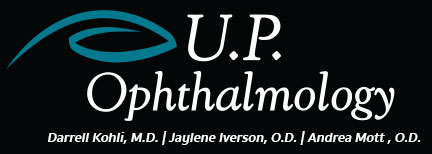Amblyopia, or lazy eye, is a disorder of the eyes. It is characterised by poor or blurry vision that is not correctable with glasses in an eye that is otherwise physically healthy and normal. The problem is due to either no transmission or poor transmission of the visual image to the brain for a sustained period of dysfunction or disuse during early childhood. The condition will only arise at this young age because most of the visual system's development in humans is complete and "locked in" by a few years of age. Amblyopia normally only affects one eye, but it is possible to be amblyopic in both eyes if both are similarly deprived of a good, clear visual image.
Amblyopia affects 2-5% of the population. Amblyopia is a developmental problem in the brain, not an organic problem in the eye. The part of the brain corresponding to the visual system from the affected eye is not stimulated properly and develops abnormally. This has been confirmed in brain specimens.
Many children who have amblyopia, especially those who are only mildly amblyopic, are not even aware they have the condition until tested at older ages, since the vision in their stronger eye is normal. However, people who have severe amblyopia may experience associated vision disorders, most notably poor depth perception.
Strabismic amblyopia
Strabismus, sometimes known as lazy eye, will result in normal vision in the fixating eye, but abnormal vision in the strabismic eye due to the brain discarding its information. Strabismus in an adult usually causes double vision (diplopia), since the two eyes are not fixated on the same object. Children's brains, however, are more plastic, and therefore can more easily adapt by ignoring images from one of the eyes, getting rid of the double vision. This plastic response of the brain, however, interrupts the brain's normal development, resulting in the amblyopia.
Strabismic amblyopia is best treated by treating the strabismus through the use of prescription glasses, vision therapy, surgery or patching.
Refractive amblyopia
If anisometropia is present, refractive amblyopia may result. Anisometropia is when there is a difference in the refraction between the two eyes. The eye with less refractive error provides the brain with a clearer image, and is favoured by the brain. Those with this condition then become more susceptible to the development of amblyopia, which may be as severe as strabismic amblyopia. Despite its severity, refractive amblyopia is commonly missed by primary care physicians because of its less dramatic appearance and lack of obvious physical manifestation, such as with strabismus.
Refractive amblyopia is diagnosed when there is a wide disparity in visual acuity between the two eyes. Refractive amblyopia is treated by correcting the refractive error early with prescription lenses. Vision therapy and/or eye patching can also be used to develop and/or improve visual abilities, binocular vision, depth perception, etc.
Form deprivation and occlusion amblyopia
Form deprivation amblyopia (Amblyopia ex anopsia) results when the ocular media is opaque, such as is the case with cataracts or corneal scarring. These opacities prevent adequate sensory input from reaching the eye, and therefore disrupt visual development. If not treated in a timely fashion, amblyopia may persist even after the cause of the opacity is removed. Sometimes, drooping of the eyelid (ptosis) or some other problem causes the upper eyelid to physically occlude a child's vision, which may cause amblyopia quickly.
One should also be wary of creating this type of amblyopia in a 'good' eye when treating for amblyopia in the other eye – so-called reverse amblyopia.
This type of amblyopia is treated by removing the opacity as soon as possible.
Although the best outcome is achieved if treatment is started before age 5, research has shown that children older than age 10 and some adults can show improvement in the affected eye. Children from 7 to 12 who wore an eye patch and performed near point activities (vision therapy) were four times as likely to show a two line improvement on a standard 11 line eye chart than amblyopic children who did not receive treatment. Children 13 to 17 showed improvement as well, albeit in smaller amounts than younger children. (NEI-funded Pediatric Eye Disease Investigator Group, 2005)
